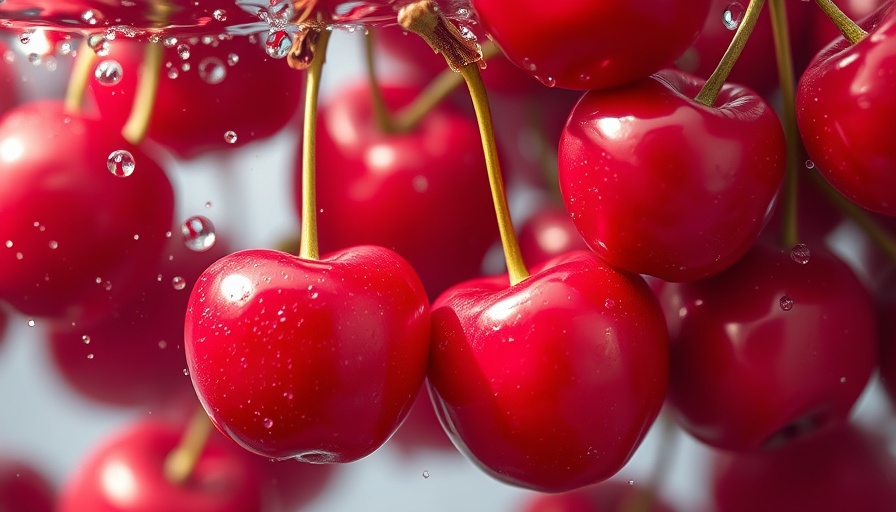
Cherries and Unexpected Guests: What TikTok Taught Us
As summer reaches its peak, cherries shine as a delightful seasonal treat. However, a recent viral TikTok video featuring cherries infested with tiny larvae has sent shockwaves across social media, prompting a mix of reactions from disgust to a sense of curiosity. The video, shared by user @wover50, showcases the unsettling sight of worms emerging from cherries after soaking them in vinegar and ice. What might seem alarming at first is a natural phenomenon rather than an alarming health concern.
Understanding the Cherry Fly Connection
These small larvae are the result of the cherry fruit fly, as confirmed by experts at Iowa State University. Female flies lay eggs on the cherries, and the resulting larvae crawl out, alarming unsuspecting consumers. But fear not; as critically observed by food consultant Bryan Le Quoc, consuming cherries that may harbor these larvae is generally safe, provided the fruit is not showing any signs of rotting. "The worms and fruit flies themselves do not carry diseases that pose a threat to humans," he reassures. This unexpected reality prompts consumers to rethink their perceptions associated with natural foods.
Navigating the Western Perspective on Food Safety
In this context, it's essential to understand the broader implications of seeking perfection in organic produce. Many consumers are driven by the notion that organic fruits must be pristine and free from blemishes. The presence of larvae, while unsettling, can encourage a more holistic understanding of food sourcing and preparation. For many, this might mean re-evaluating how we engage with our food and the notion of sustainability in agricultural practices.
Rethinking Food Disgust
Cultural and social attitudes towards food play a significant role in our reactions to such discoveries. The overwhelming comments on social media, ranging from disgust to humor, reveal how deeply ingrained our perceptions of cleanliness and safety in food are. This incident can serve as a jumping-off point for conversations about where our food comes from and our comfort levels with natural imperfections.
Embracing Nature’s Surprises in Our Diets
The viral incident may lead to a new wave of awareness regarding food sourcing and safety standards. It challenges us to embrace the idea that not all fruits must adhere to cosmetic perfection. Rather than turning away from our beloved cherries, let’s consider these tiny larvae as part of the natural life cycle, a reminder of the vibrant world in which our favorite foods are grown.
Next Steps: Educate and Empower
While exploring various social media platforms, educate yourself about the realities of fruit production and safe consumption practices. Engage in conversations that promote knowledge about the benefits of organic farming and what it means to consume food cultivated naturally.
 Add Row
Add Row  Add
Add 




Write A Comment